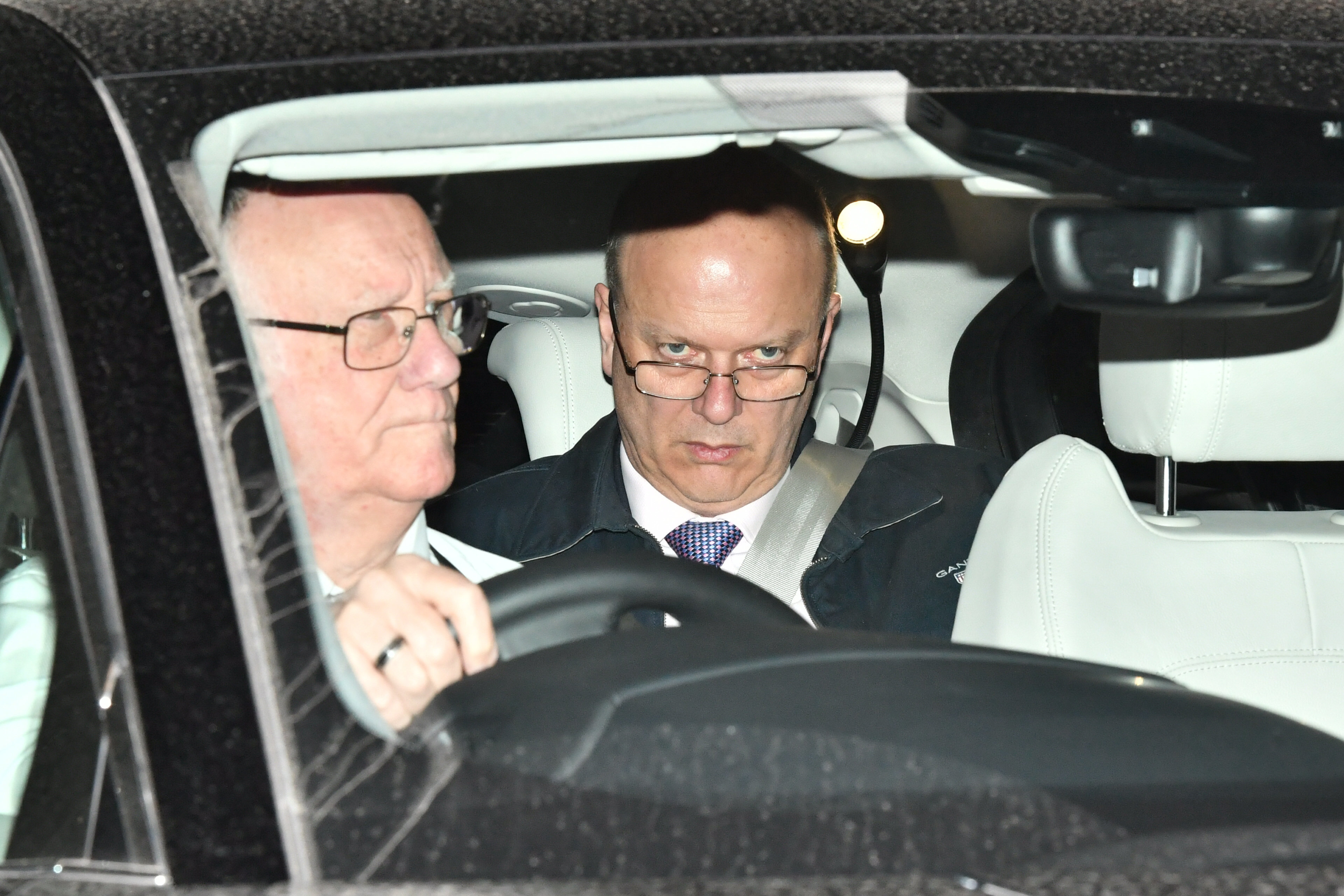The government is spending more than half a million pounds a year on a fleet of cars to drive ministerial briefcases and papers around Whitehall, HuffPost UK can reveal.
According to a response to a Freedom of Information request made by this website, eight vehicles run by a Foreign, Commonwealth and Development Office (FCDO) agency cost the taxpayer £570,321 in 2019/20.
The full cost to courier briefing papers and other documents with the external messenger service (EMS) is likely to be higher, as some departments pay extra to use it. The Department for Transport (DfT) also has a service that transports ministerial papers and boxes.
Very little is known about the EMS. But – according to another FOI response – it seems to have one specific job: “Transporting items: ministerial documents and red boxes.”
Working through a box of briefing papers is central to a government minster’s day. These despatch boxes are often – but not always – red, and the most famous is the one lifted performatively by the chancellor on the day of the budget each year.
The passenger-less practice has long been a minor fascination in Westminster, particularly given efforts to get ministers to more often use public transport rather than official cars.
In 2010, Michael Gove’s wife Sarah Vine revealed in a newspaper column that ministerial boxes travelled in the “air-conditioned splendour” of a chauffeur-driven limo.
A year later, Francis Maude, then the minister in charge of civil service reform, said the government was moving towards paperless working, and suggested the need for hard copies rather than email was an “alibi”.
But it continues, the government argues, because some papers contain classified material that cannot be delivered electronically.
How often a car or van is used is to drive a cache of documents is hard to quantify, however.
HuffPost UK has previously reported how the Department for Transport’s government car service (GCS) was driving ministerial briefcases around and charging on a per journey basis.
We gathered data on the cost of these so-called “despatch box movements” until 2016/17 when the department found a way not to reveal what it was spending. Between 2011 and 2016, the cost of the GCS transporting ministerial boxes and papers was between £40,000 and £110,000 a year – significantly less than the EMS.
The DfT has also stopped publishing details of how much it costs to operate ministerial cars – including the vehicles with actual ministers in them – despite crowing about how much money was being saved compared to the last Labour government.
The FCDO refused repeated attempts by HuffPost UK to establish whether the GCS and the EMS are now effectively carrying out the same job. The DfT confirmed GCS does transport papers on their own.
The FCDO would also not say when the EMS started couriering papers for the whole of government, and not just its parent department, and rebuffed an FOI request asking for annual costs beyond the single year of 2019/20.
What it was willing to reveal, for the first time, was that the fleet consists of five Ford Focus estates, two Ford Fiestas and a Ford Transit, and is managed by the Foreign, Commonwealth and Development Office Services under a subscription arrangement.
It explained the EMS deals with mail, ministerial boxes and visas for the FCDO, and the agreement also includes deliveries between London embassies and royal palaces. Departments and quangos signed up to its cost-saving 1HMG initiative can also use it. Other departments can use the service but would have to pay FCDO Services.
Other costs not covered by the subscription include “ad hoc” journeys outside of usual working hours, at the weekend, or urgent deliveries to ministers in their constituencies. There were 373 of these trips in 2019/20 but the costs were not disclosed.
Ministerial cars are sometimes used for deliveries that raise eyebrows. In 2016, it was reported that then work and pensions secretary Iain Duncan Smith’s resignation letter had been carried by car from his Buckinghamshire home to prime minister David Cameron. The DfT subsequently claimed it did not know how much this had cost when HuffPost UK requested it.
The department stressed the EMS delivers classified material that cannot be transported by ordinary mail or digitally, and that drivers stop at multiple departments within a single journey wherever possible.
A spokesperson said: “The government is committed to delivering value for money to the taxpayer, while maintaining our national security.
“Classified material that cannot be sent electronically or by post must be transported by specialist means. We do so in the most secure and cost-effective manner possible.”
But other governments have found alternatives to using vehicles to deliver papers. Estonia has been widely praised for building a digital society, and 99% of its governmental services are online.
Siim Sikkut, chief information officer for the Estonia government, explained to HuffPost UK how both classified papers containing state secrets and “official use” documents not for public consumption can be passed from official-to-official through its encrypted government-wide X-Road data sharing platform.
He said: “For classified, we have separate document management systems, separation of networks […] but without going to details, that level exchange also happens digitally, just even more securely.”
So does “e-Estonia” use traditional mail and paper documents at all? By email, Sikkut said: “Unfortunately, yes I say unfortunately, because it means some extra cost that could be avoided ideally.”
Just 17% of all the Estonia government’s communications are paper-based, but that is mostly made up of correspondence with prisoners and foreign administrations and “mandatory” documents such as a court summons that require a signature.
Sikkut added: “However, all communication between government agencies aka internal to government, is digital. No exception there.”


